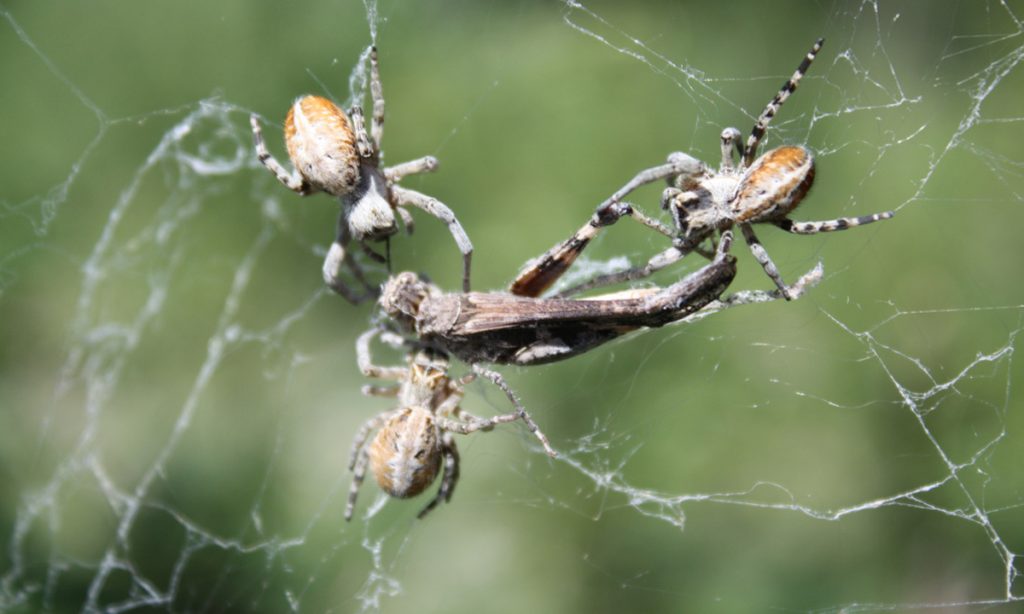
And you thought raising human newborns was tough!
Across Europe, Africa and Asia, Stegodyphus spiders reproduce in large nests that are home to a number of spider families.
Among them, one species native to South Africa, Stegodyphus dumicola, feed their young in a pretty gruesome way.
As females take longer to mature than males, only about 40 percent of the females reproduce. The ones that don’t — called virgin females — help out around the nest, participating in communal childcare.

It’s a thankless job; when the eggs hatch, the mothers and the virgin females feed the spiderlings by spitting out a nutrient-rich fluid. The process of producing the fluid, though, essentially liquefies the female spider’s internal organs. As she gets close to death, the baby spiders will swarm her and start to eat her alive.
The process — called matriphagy, or mother-eating — is rare in nature and even more rare in the spider world. Most spider species disperse almost immediately after hatching and live solitary lives. Only about three percent of all known spider species participate in the kind of cooperative breeding found in Stegodyphus dumicola.
Though matriphagy is rare, Jo-Anne Sewlal, a fellow of the Zoological Society of London, tells National Geographic it’s simply the cost of survival.
“While it may seem unthinkable for a child to cannibalize its mother,” Sewlal says, “it’s important to understand matriphagy has evolved over many generations to be the most effective means of ensuring the survival of the species.”
Watch:




